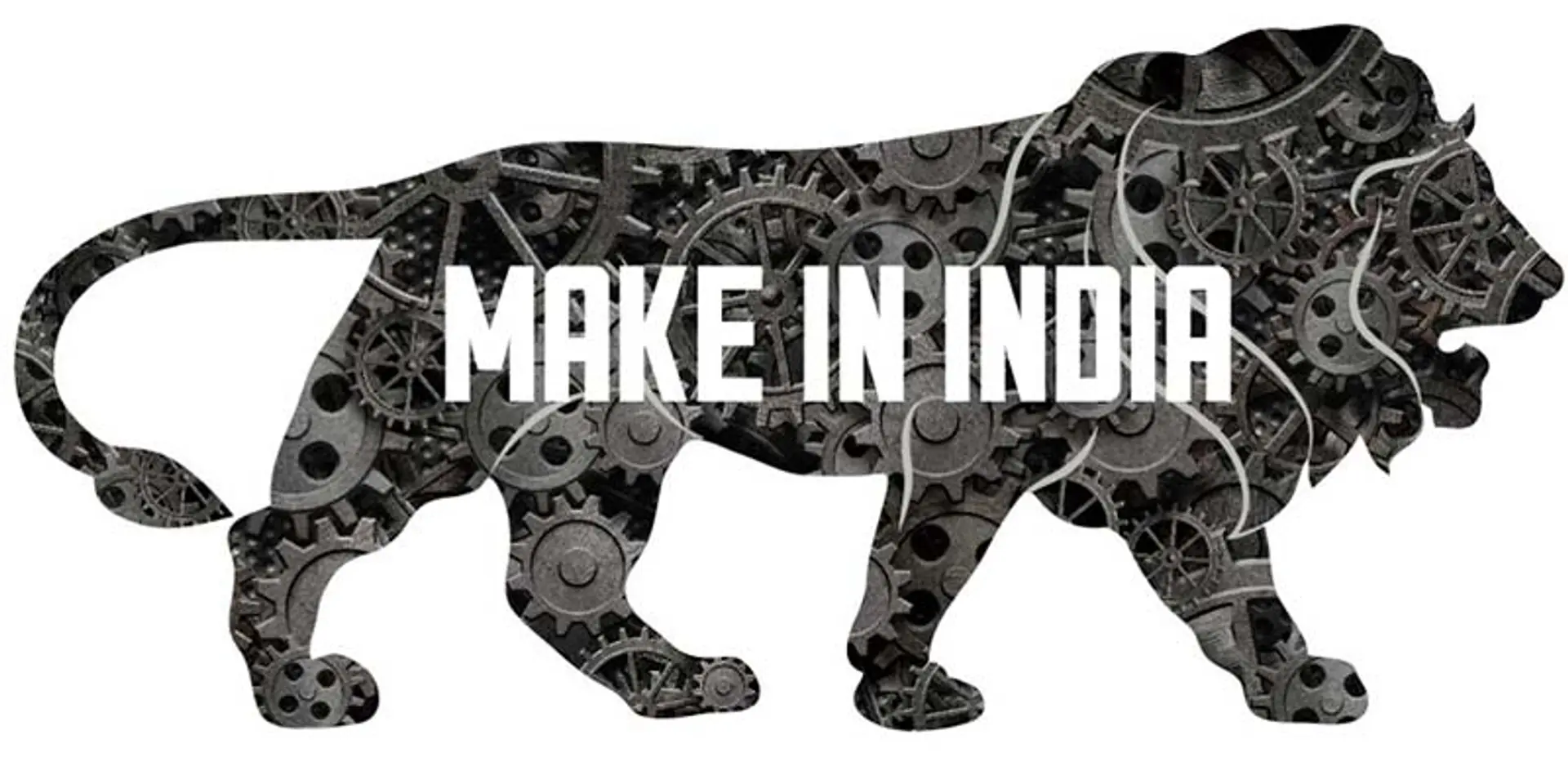Make in India reinforces Brand India. A look at how key Indian sectors present huge opportunities for investment and growth
The Government of India’s ambitious initiative, which aims to transform the country from being Asia’s third-largest economy into a global manufacturing powerhouse, Make in India, completed one year in September 2015. The initiative has set an ambitious goal of creating 100 million additional jobs in the manufacturing sector by 2022, and increasing the share of manufacturing in the country’s Gross Domestic Product (GDP) to 25 per cent from 16 per cent.
The good news is that India has already secured the top spot, and become the number 1 destination in the world for foreign investment. Thanks to Make in India, which has played a significant role in making this happen. Since the launch of the initiative, overall Foreign Direct Investment (FDI) has increased by 39 per cent.
From defence to railways, chemicals to textiles, the integrated achievements and strengths of these sectors have catapulted the country into the premier economic league. Let’s take a look at some of the top manufacturing sectors and how they can fuel India’s growth momentum.
Defence
India’s current defence requirements are largely catered by imports. But considering we have the world’s third-largest armed forces, coupled with the fact that the government has increased FDI in the sector to 49 per cent, there is a huge growth opportunity in the Indian defence manufacturing sector. Opening this sector to FDI presents opportunities to enter into strategic partnerships with Indian companies to not just leverage the domestic market but also aim at global business. It is estimated that in the next seven to eight years, the sector presents Rs 250 billion worth of investments.
Automobiles
The seventh-largest automobile producer in the world, India’s automobile industry accounts for almost 7 per cent of India’s GDP and employs about 19 million people, both directly and indirectly. It is this sector that will be one of the main drivers of growth in India, evident from the growth in FDI in this industry – a 164 per cent growth in the seven-month period from September 2014.
According to PricewaterhouseCoopers, 10 leading car makers have invested around Rs 31,570 crore; two-wheeler companies nearly Rs 8,555 crore; and tyre companies around Rs 7,350 crore in the one year since the launch of the initiative.
Companies like Mahindra and Mahindra plan to invest Rs 3,500 crore in capex and new investments every year over the next three years and German automobile firm Volkswagen plans to make India a low-cost manufacturing hub to cater to emerging and developed markets. Volkswagen will also invest Rs 1,500 crore on localisation and producing cost-effective products.
IT & BPM
The IT-BPM sector constitutes 9.5 per cent of the country’s GDP and the exports from India’s IT industry account for 55 per cent of the global market. Additionally, the rapid growth of urban infrastructure continues to foster several IT centres in the country.
The government’s Digital India Campaign, which envisages a $20 billion investment covering mobile connectivity throughout the country, re-engineering of government processes via technology and enabling e-delivery of citizen services. is expected to further boost the sector. Additionally, with the National Optical Fibre Network (NOFN) being laid down in phases to connect 250,000 gram panchayats in the country, the IT sector will only gain.
Many IT giants have revealed their expansion plans and how they will leverage Make in India. One of these is Oracle, which has announced plans to expand campuses outside the US. It plans to open one in Bengaluru as part of the ‘Make in India’ campaign. The company is also set to launch nine incubation centres throughout India, and train more than half a million students each year to develop computer science skills
Chemicals
A key constituent of the Indian economy, the chemical industry accounts for about 2.11 per cent of the country’s GDP. In terms of volume of production, the Indian chemical industry is the third-largest producer in Asia and the sixth-largest in the world; in 2014 it generated business worth $118 billion.
Bulk chemicals account for 39 per cent of the Indian chemical industry, followed by agrochemicals (20.3 per cent) and specialty chemicals (19.5 per cent). Pharmaceuticals and biotechnology account for the remaining share. By allowing 100 per cent FDI in the sector and by launching the Draft National Chemical Policy aimed at increasing the sector’s share in the country’s GDP, the Government of India has been supportive to say the least.
According to a Tata Strategic Management report released in October 2015, the chemical industry in the country has the potential to grow at 9 per cent per annum to touch $214 billion in next four years. The report also highlights that at $139 billion, the current domestic chemical market constitutes only 3.3 per cent of the global chemical market.
Renewable energy
India has the fifth-largest power generation portfolio, worldwide, with a power generation capacity of 271.722 GW. The renewable energy contribution stands at 77 GW of the total installed capacity of 271.722 GW in the country (as on March 2015). Wind energy accounts for nearly 70 per cent (23.44 GW) of installed capacity, thereby making India the world’s fifth-largest wind energy producer. The Government of India has set targets that will take the total renewable capacity to almost 175 GW by the end of 2022. This includes 60 GW from wind power, 100 GW from solar power, 10 GW from biomass power and 5 GW from small hydro power.
The government has created a liberal environment for foreign investment in renewable energy projects. The establishment of a dedicated financial institution – the Indian Renewable Energy Development Agency – makes for renewed impetus on the promotion, development, and extension of financial assistance for renewable energy and energy efficiency/conservation projects. By offering various incentives, such as generation-based incentives (GBIs), capital and interest subsidies, viability gap funding, concessional finance, and fiscal incentives, the government is actively promoting the adoption of renewable energy resources. These two reasons are likely to further push growth in the renewable sector.
With economic growth, increasing prosperity, a growing rate of urbanisation and rising per capita energy consumption that has widened access to energy in the country, the renewable sector is likely to benefit in a big way.
Pharmaceuticals
The reasons to invest in this sector are many. But the big one is that by 2020, India is expected to rank amongst the top three pharmaceutical markets in terms of incremental growth. And, because the cost of production in India is significantly lower than that of the US, and almost half of that of Europe, global pharmaceuticals will only be keen about this sector.
Some high-intensity activity seen in this sector includes the work started by Glaxosmithkline Pharmaceuticals on its largest greenfield tablet manufacturing facility in Vemgal in Kolar district, Karnataka, with an estimated investment of Rs 1,000 crore; and an investment of $48 million in Narayan Hrudayalaya hospitals by CDC, the UK’s development finance institution.
Make in India – poised to transform India’s growth
While there are numerous roadblocks ranging from lack of infrastructure to volatile political climate, the story so far tells you that the Government of India is making an honest attempt to make the initiative work. It has introduced several steps to improve the business environment by easing processes to do business in the country, and attracting foreign investments. In 2015, the Government of India cleared as many as 1,671 proposals by investors, double the number of approvals granted in 2014.
One thing is clear – the stage is set for India to transform.







